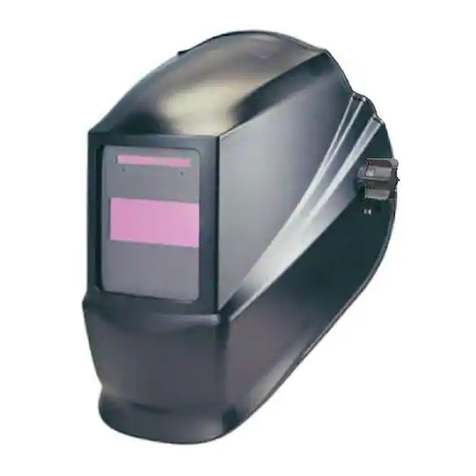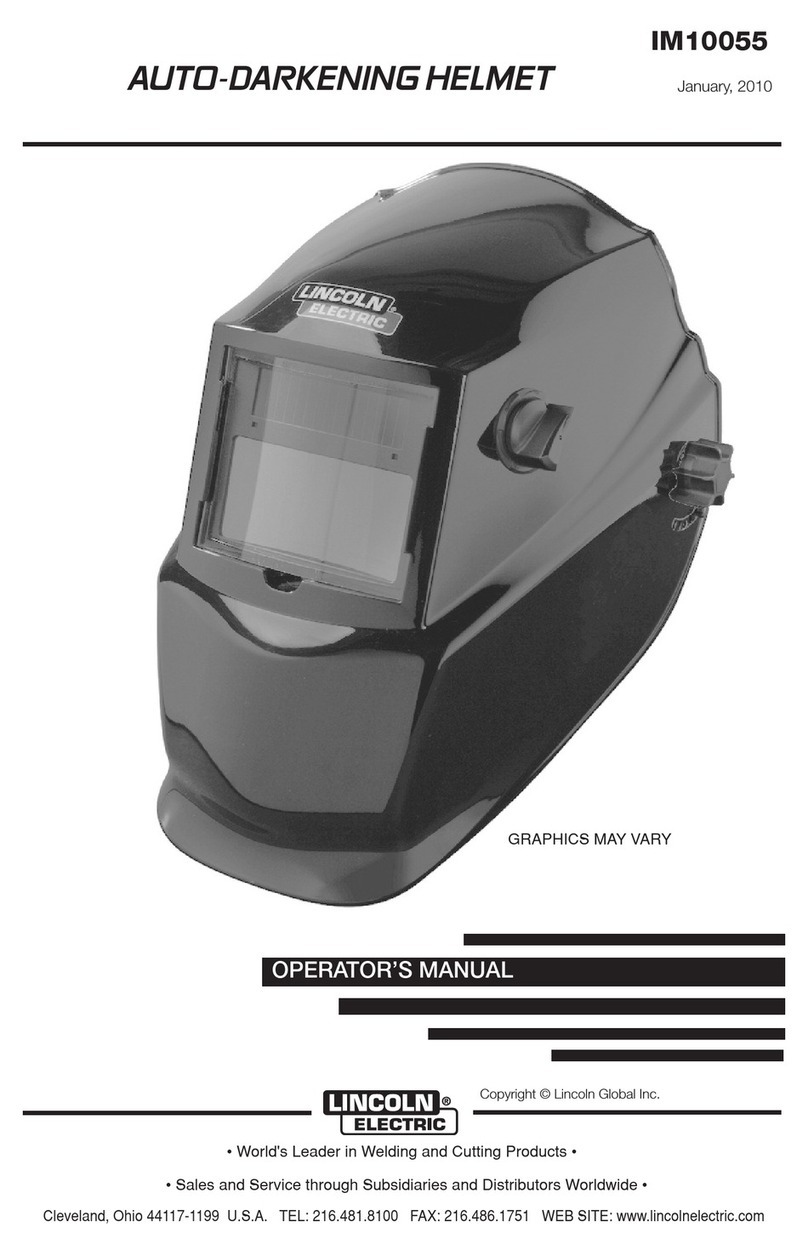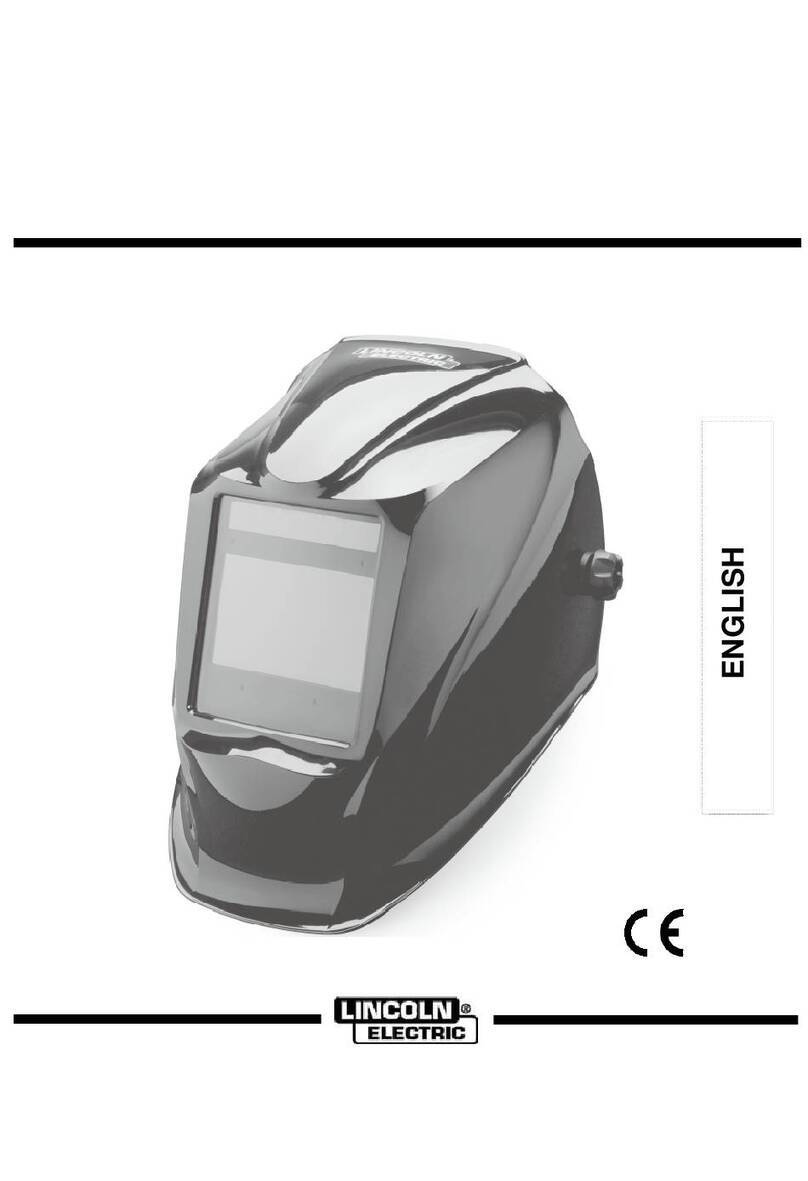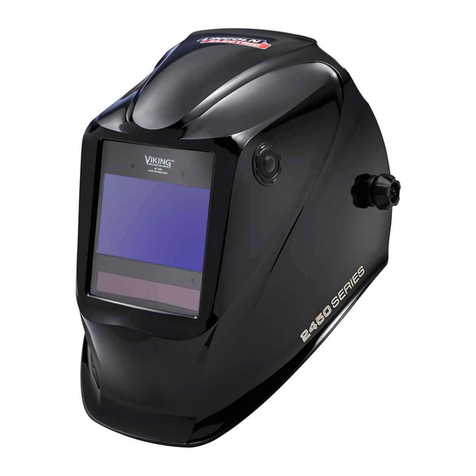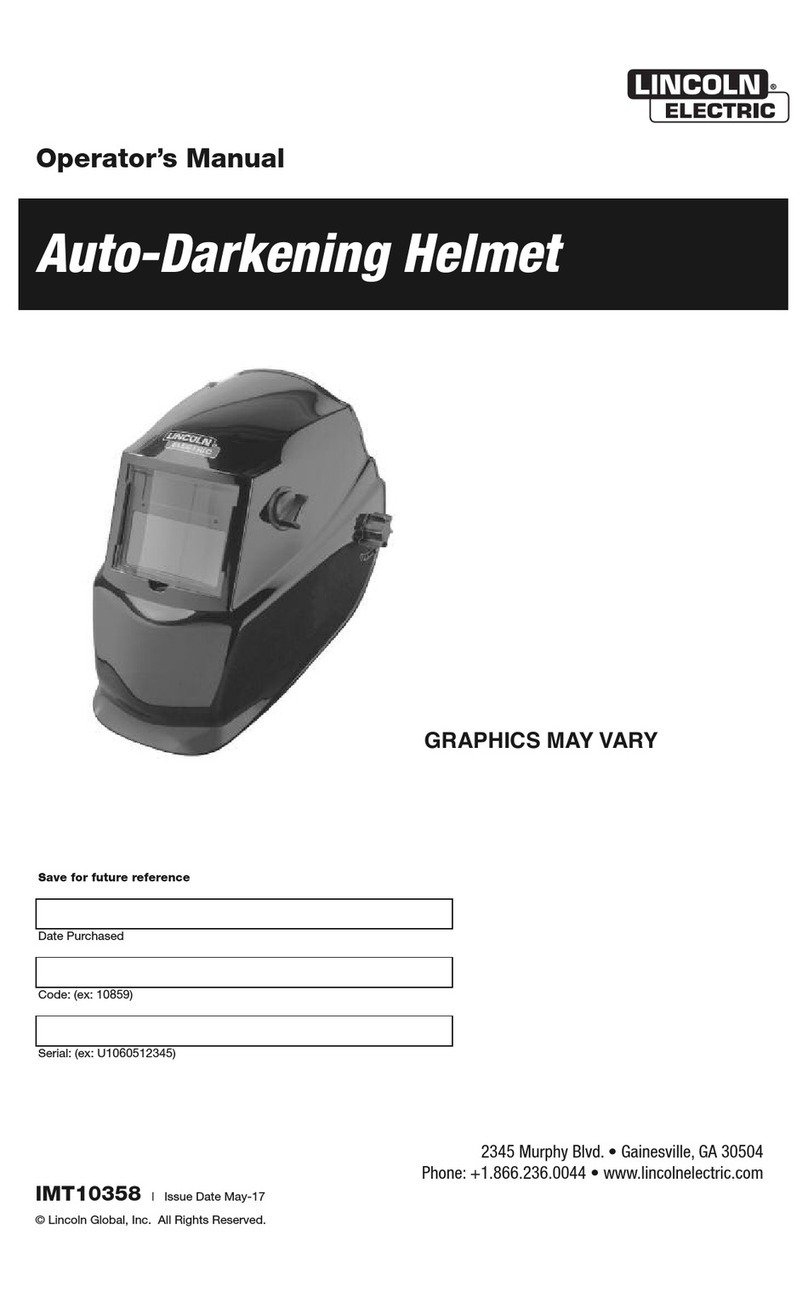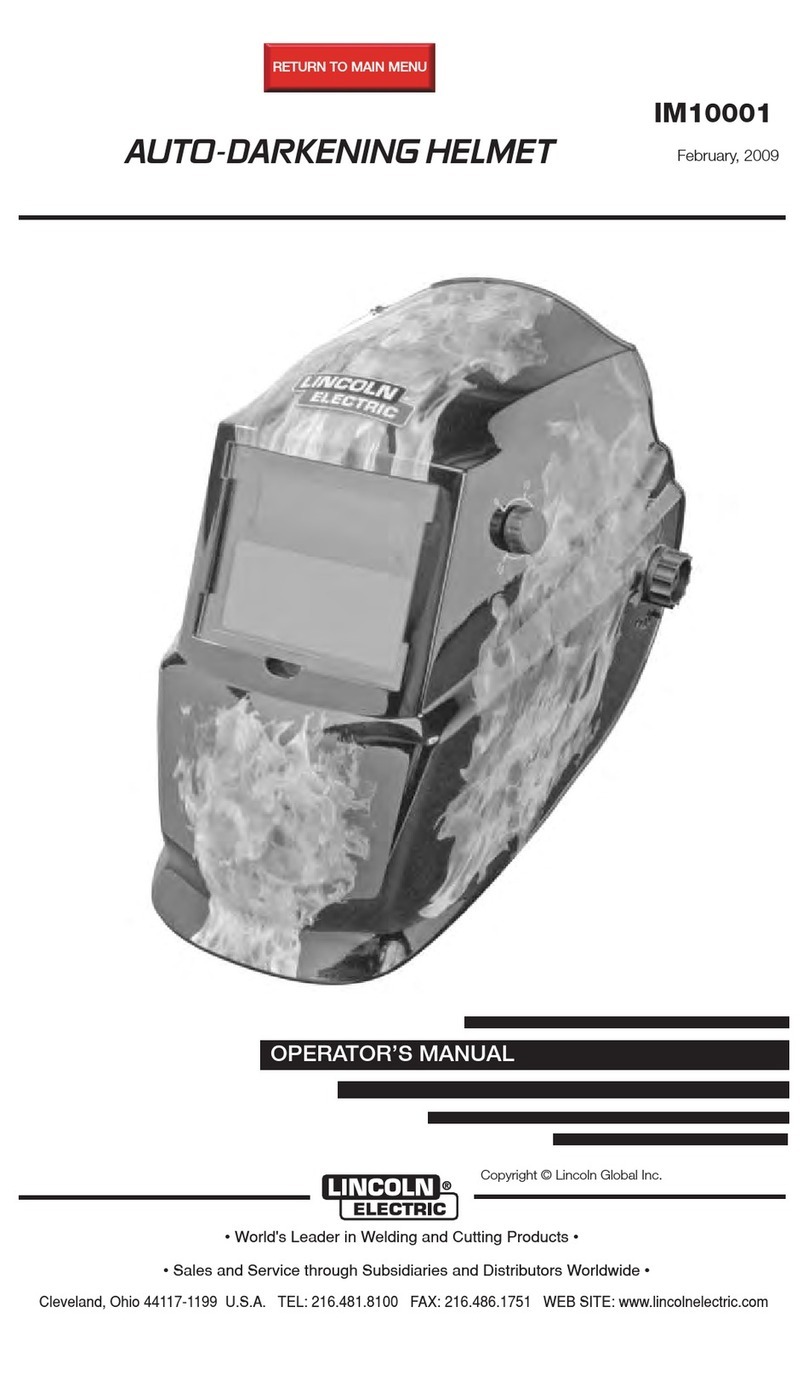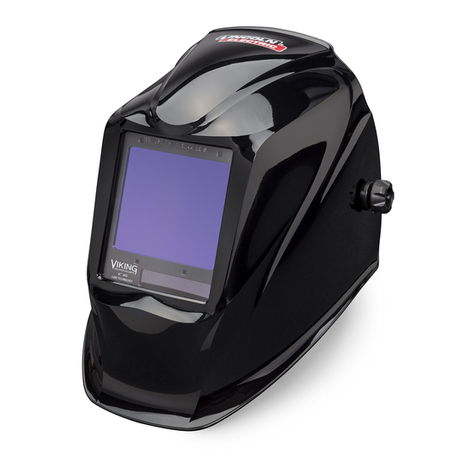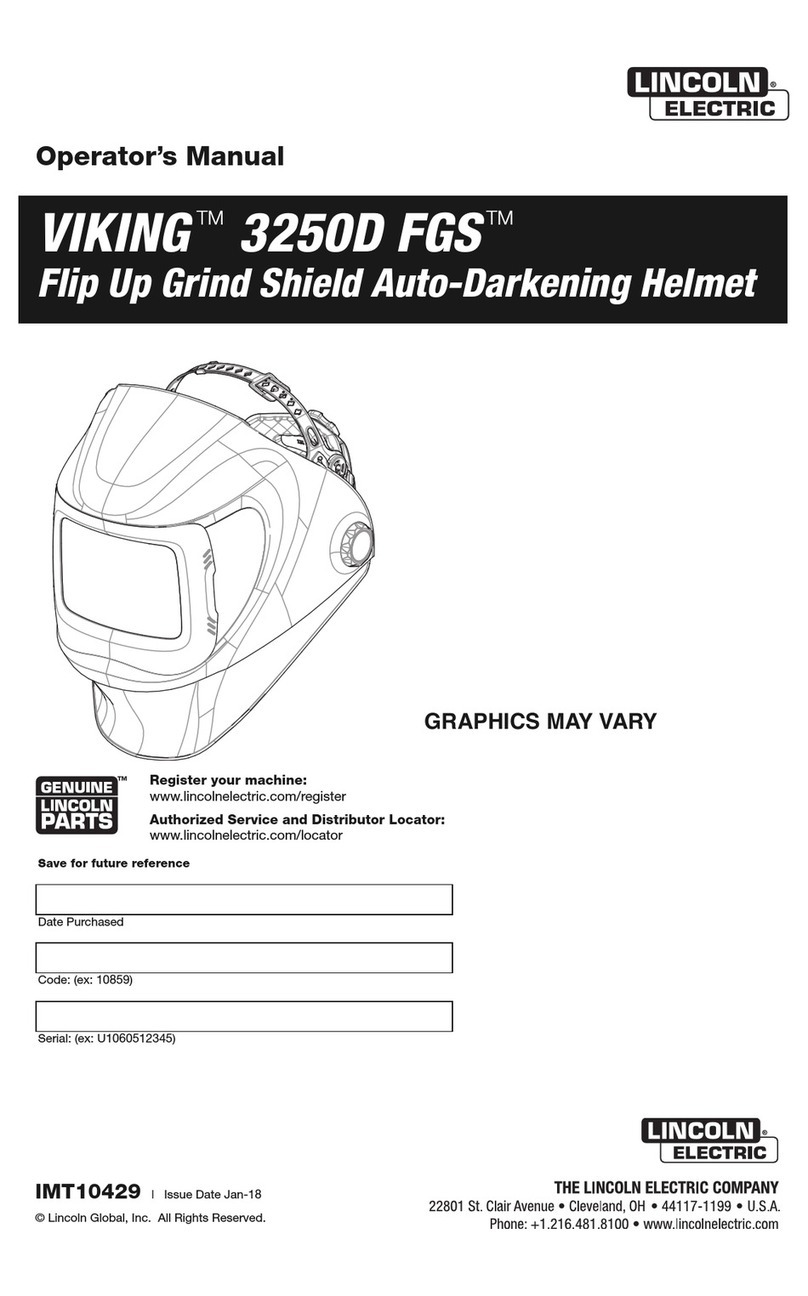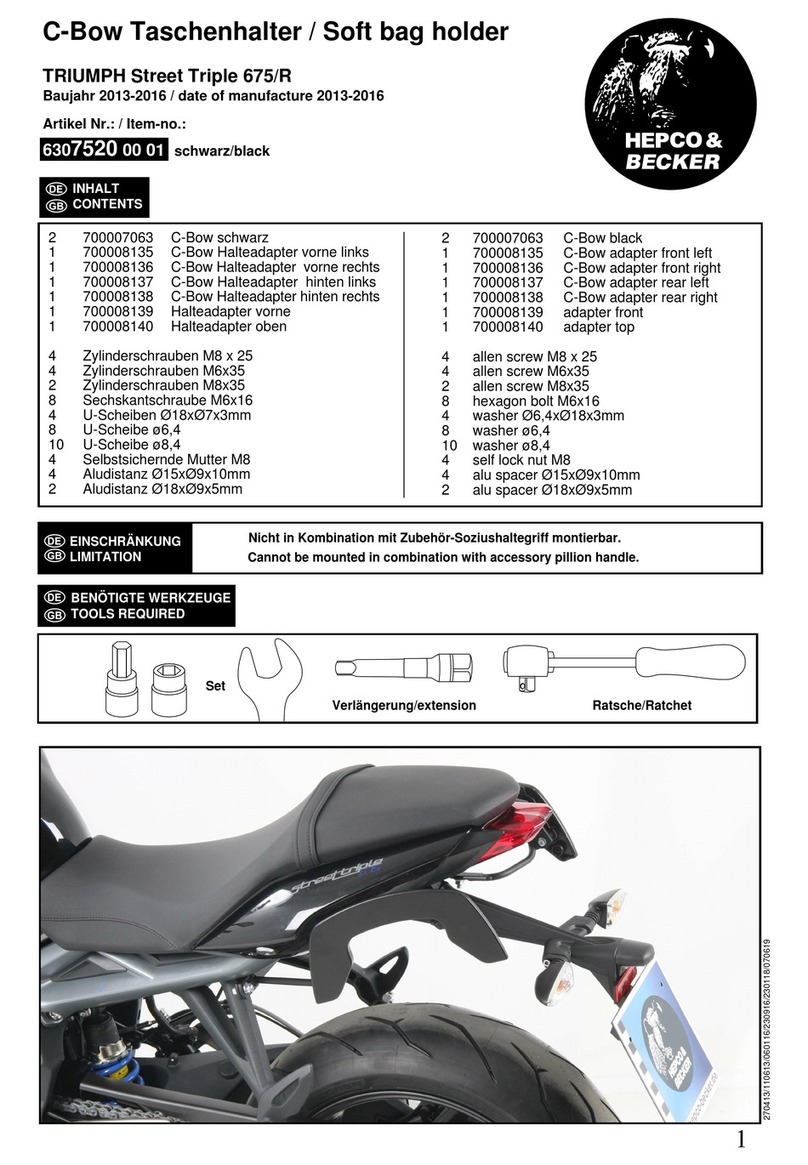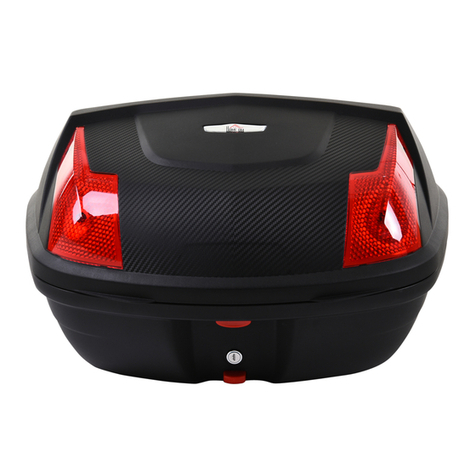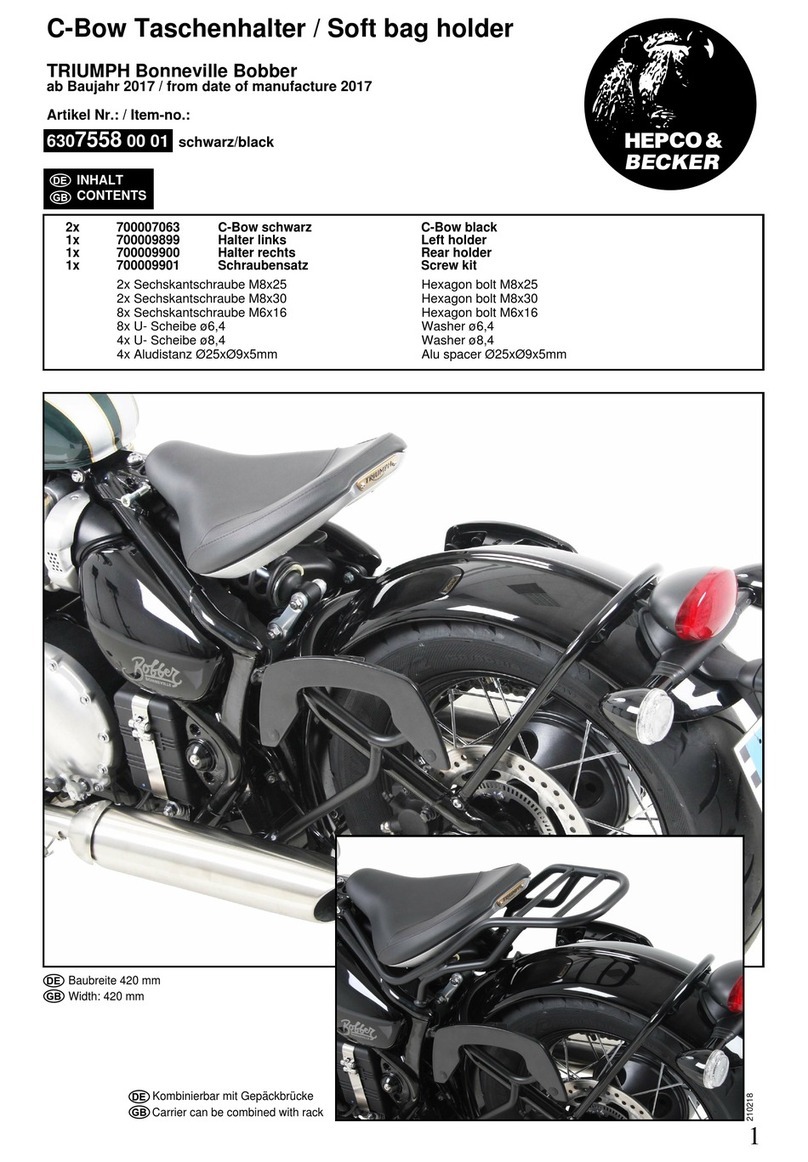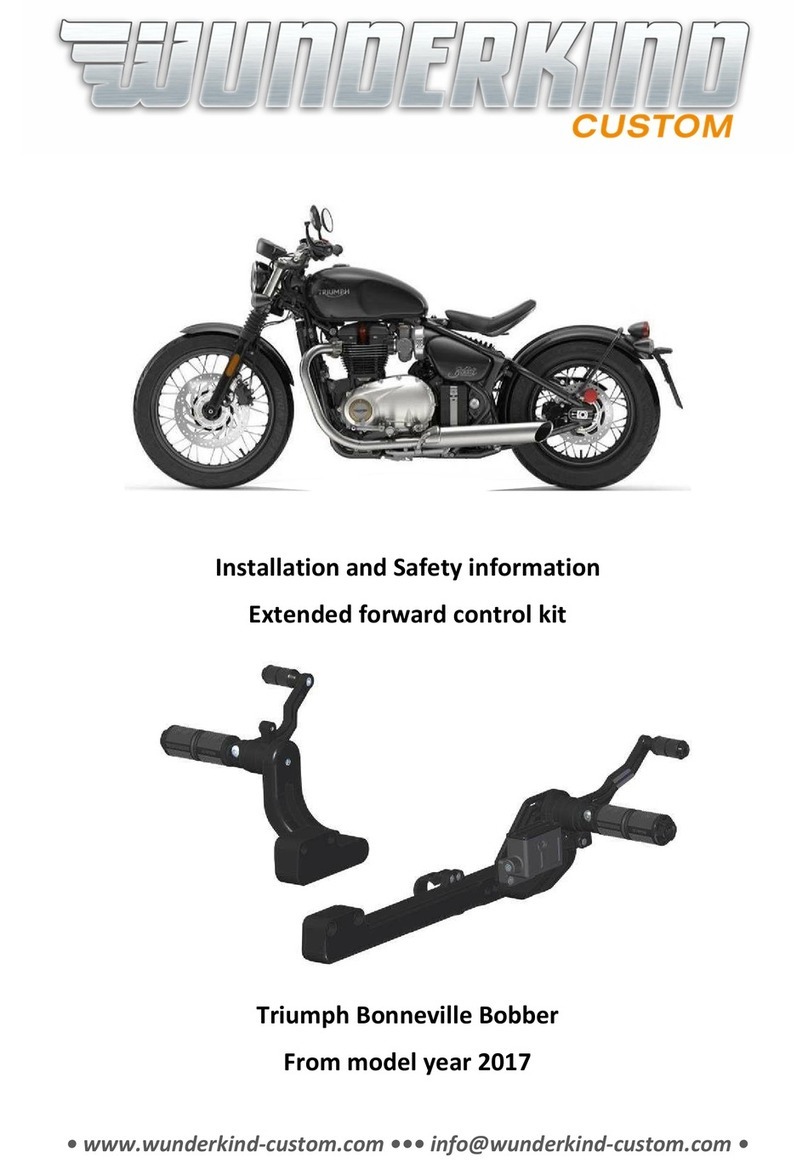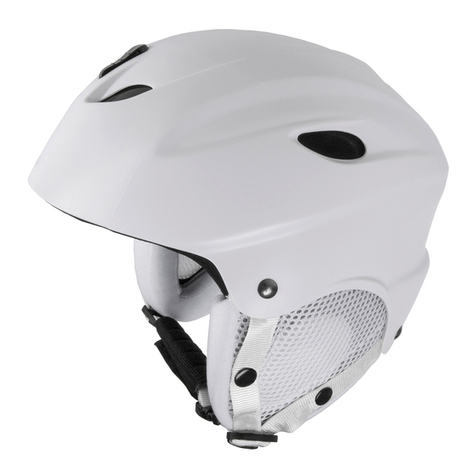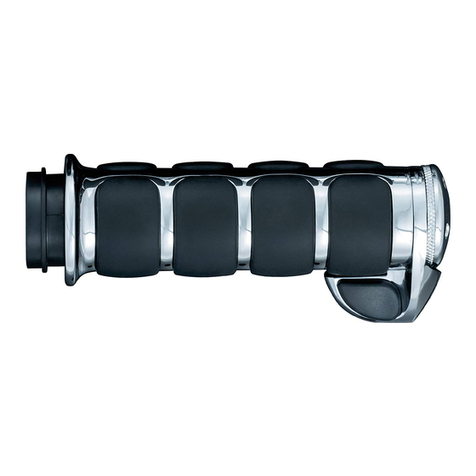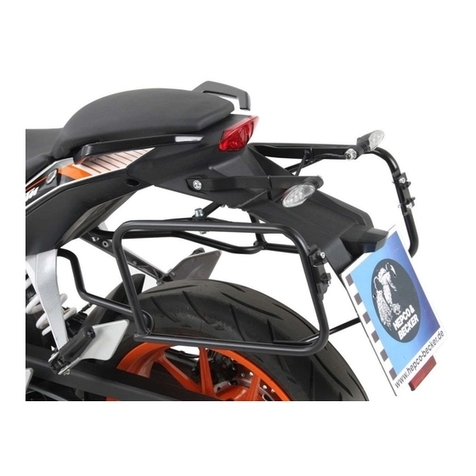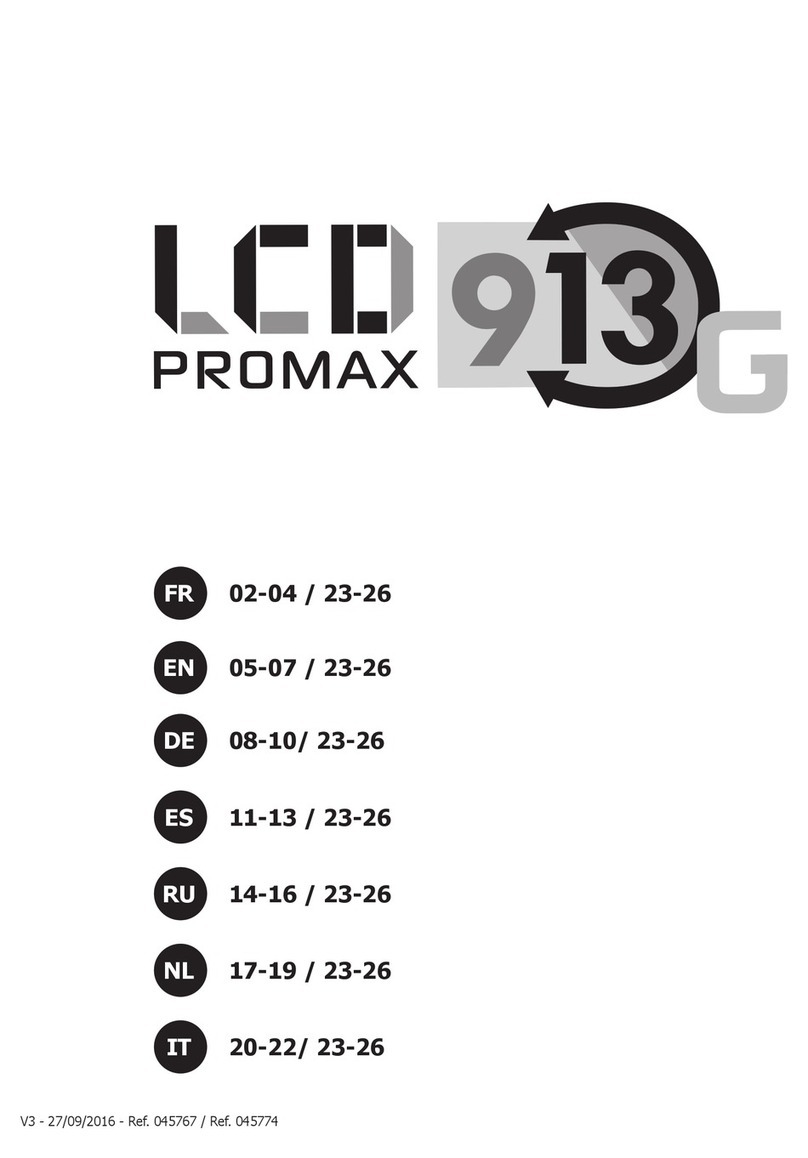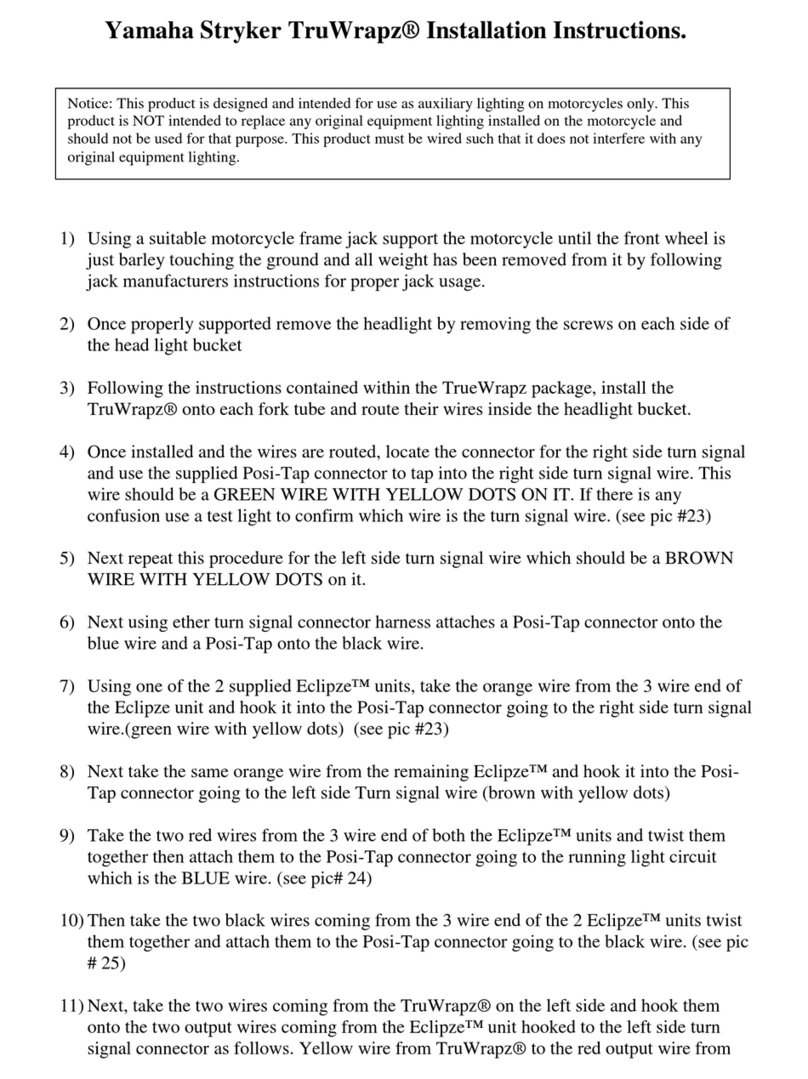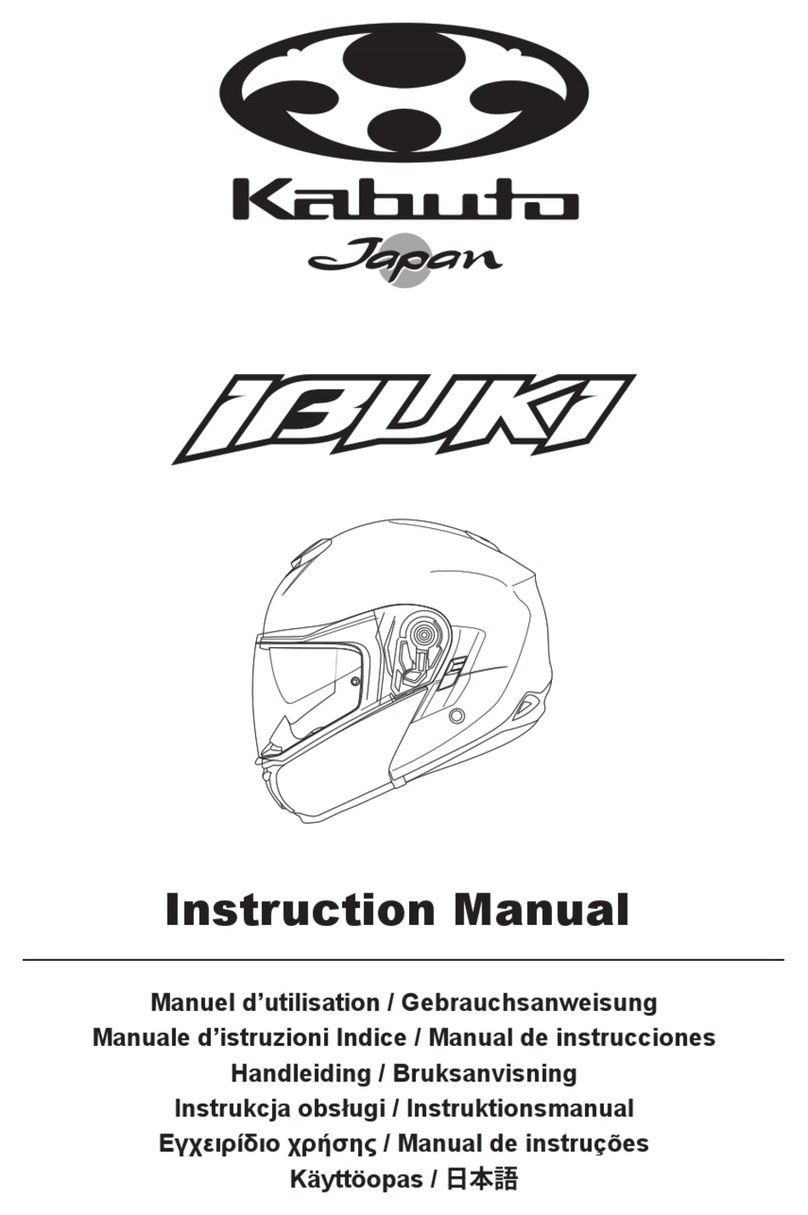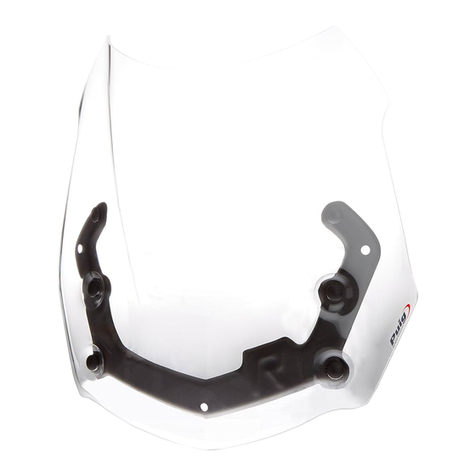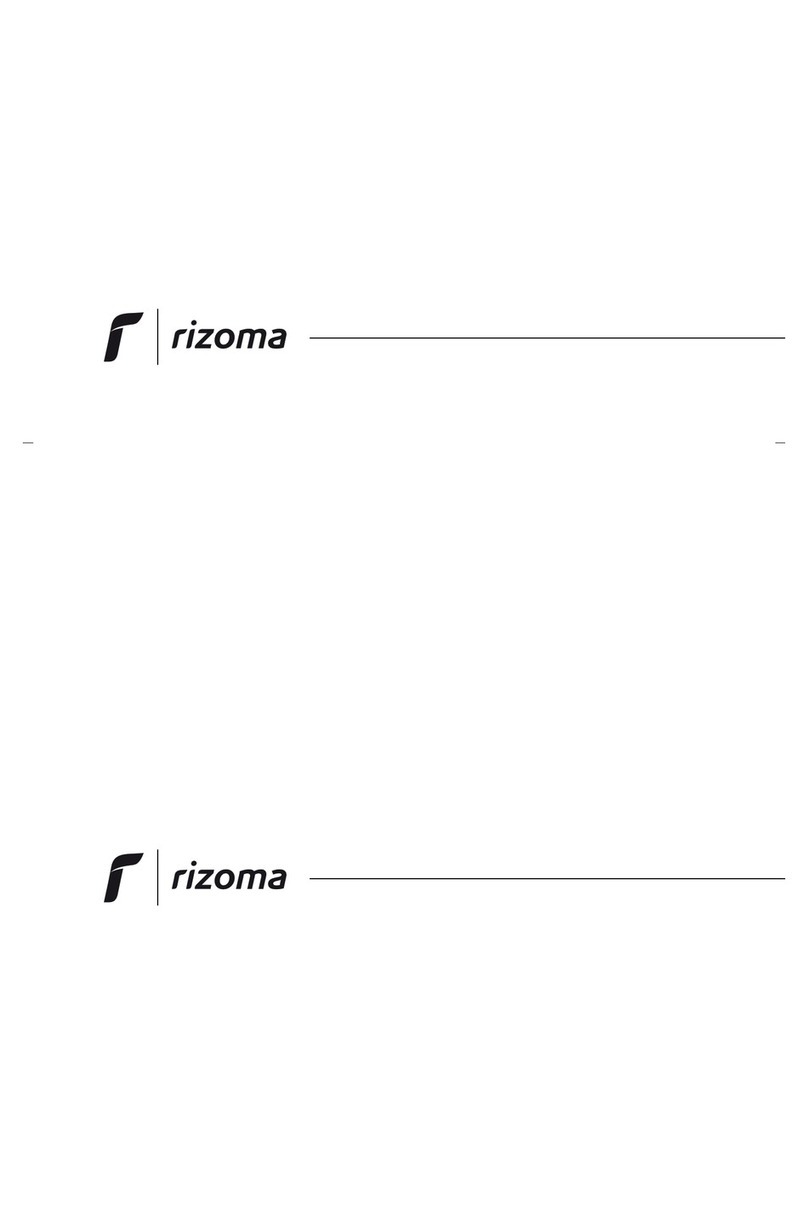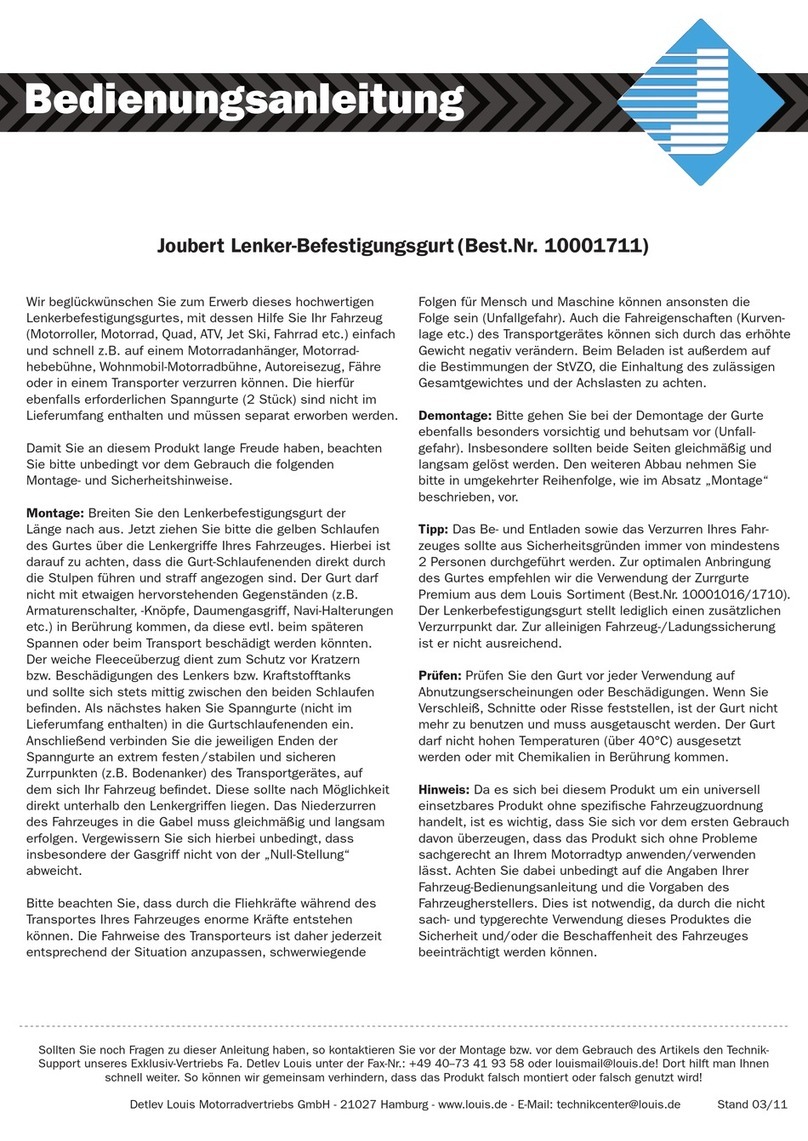
AVVERTENZA
Questa macchina deve essere impiegata solo da personale qualificato. Assicuratevi che tutte le procedure di installazione,
impiego, manutenzione e riparazione vengano eseguite solamente da persone qualificate. Leggere e comprendere questo
manuale prima di far funzionare la macchina. La mancata osservanza delle istruzioni di questo manuale può provocare seri
infortuni, anche mortali, alle persone o danni alla macchina. Leggere e comprendere le spiegazioni seguenti sui simboli di
avvertenza. La Lincoln Electric non si assume alcuna responsabilità per danni conseguenti a installazione non corretta,
incuria o impiego in modo anormale. Se si richiede la protezione dalla proiezione di particelle ad alta velocità a temperature
estreme, la protezione selezionata per gli occhi deve essere contrassegnata con la lettera “T” subito dopo la lettera che indica
la resistenza agli urti. Se dopo la lettera di protezione agli urti non è presente la lettera “T”, la protezione per gli occhi può
essere usata soltanto contro le particelle ad alta velocità a temperatura ambiente. Se i simboli F, B e A nelle marcature non
sono comuni sia per le lenti che per il casco, per la protezione completa per gli occhi si assegna il simbolo inferiore.
AVVERTENZA: Questo simbolo indica che occorre seguire le istruzioni per evitare seri infortuni, anche mortali, alle
persone o danni a questa macchina. Proteggete voi stessi e gli altri dalla possibilità di seri infortuni anche mortali.
LEGGERE E COMPRENDERE LE ISTRUZIONI: Leggere e comprendere questo manuale prima di far funzionare la
macchina. La saldatura ad arco può presentare dei rischi. La mancata osservanza delle istruzioni di questo manuale può
provocare seri infortuni, anche mortali, alle persone o danni alla macchina.
LA FOLGORAZIONE ELETTRICA E’ MORTALE: Le macchine per saldatura generano tensioni elevate. Non toccate
l’elettrodo, il morsetto di massa o pezzi da saldare collegati alla macchina quando la macchina è accesa. Mantenetevi
isolati elettricamente da elettrodo, morsetto e pezzi collegati a questo.
MACCHINA CON ALIMENTAZIONE ELETTRICA: Togliere l’alimentazione con l’interruttore ai fusibili prima di svolgere
operazioni su questa macchina. Mettere la macchina a terra secondo le normative vigenti.
MACCHINA CON ALIMENTAZIONE ELETTRICA: Ispezionare periodicamente i cavi di alimentazione, all’elettrodo e al pezzo.
Se si riscontrano danni all’isolamento sostituire immediatamente il cavo. Non posare la pinza portaelettrodo direttamente sul
banco di saldatura o qualsiasi altra superficie in contatto con il morsetto di massa per evitare un innesco involontario dell’arco.
I CAMPI ELETTRICI E MAGNETICI POSSONO ESSERE PERICOLOSI: Il passaggio di corrente elettrica in un conduttore
produce campi elettromagnetici. Questi campi possono interferire con alcuni cardiostimolatori (“pacemaker”) e i saldatori
con un cardiostimolatore devono consultare il loro medico su possibili rischi prima di impiegare questa macchina.
CONFORMITÀ CE: Questa macchina è conforme alle Direttive Europee.
RADIAZIONI OTTICHE ARTIFICIALI: Conformemente a quanto prescritto nella Direttiva 2006/25/CE ed alla Norma EN
12198, l'apparecchiatura è di categoria 2. Si rende obbligatoria l'adozione di Dispositivi di Protezione Individuale (DPI)
con grado di protezione del filtro fino ad un massimo di 15, secondo quanto prescritto dalla Norma EN169.
FUMI E GAS POSSONO ESSERE PERICOLOSI: La saldatura può produrre fumi e gas dannosi alla salute. Evitate di
respirare questi fumi e gas. Per evitare il pericolo l’operatore deve disporre di una ventilazione o di un'estrazione di fumi
e gas che li allontanino dalla zona in cui respira.
I RAGGI EMESSI DALL’ARCO BRUCIANO: Usate una maschera con schermatura adatta a proteggervi gli occhi da spruzzi
e raggi emessi dall’arco mentre saldate o osservate la saldatura. Indossare indumenti adatti in materiale resistente alla
fiamma per proteggere il corpo, sia vostro che dei vostri aiutanti. Le persone che si trovano nelle vicinanze devono essere
protette da schermature adatte, non infiammabili, e devono essere avvertite di non guardare l’arco e di non esporvisi.
GLI SPRUZZI DI SALDATURA POSSONO PROVOCARE INCENDI O ESPLOSIONI: Allontanare dall'area di saldatura quanto
può prendere fuoco e tenere a portata di mano un estintore. Gli spruzzi o altri materiali ad alta temperatura prodotti dalla
saldatura attraversano con facilità eventuali piccole aperture raggiungendo le zone vicine. Non saldare su serbatoi, bidoni,
contenitori o altri materiali fino a che non si sia fatto tutto il necessario per assicurarsi dell'assenza di vapori infiammabili o
nocivi. Non impiegare mai questa macchina se vi è presenza di gas e/o vapori infiammabili o combustibili liquidi.
I MATERIALI SALDATI BRUCIANO: Il processo di saldatura produce moltissimo calore. Ci si può bruciare in modo grave con le
superfici e materiali caldi della zona di saldatura. Impiegare guanti e pinze per toccare o muovere materiali nella zona di saldatura.
MARCHIO DI SICUREZZA: Questa macchina è adatta a fornire energia per operazioni di saldatura svolte in ambienti con
alto rischio di folgorazione elettrica.
L'eventuale contatto dei materiali con la pelle dell'operatore può causare reazioni allergiche a persone sensibili.
Questo non è un casco di sicurezza! Questo casco è stato progettato solo per la protezione dai rischi relativi ai processi
di saldatura.
2


